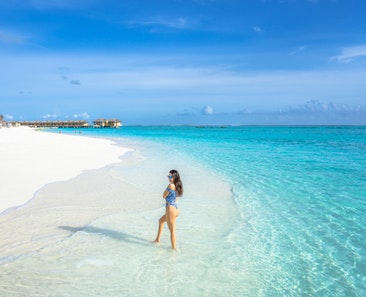Just over a year ago, my friend William von Herff and I made a bet on the following question. By 2028, which regional district would be the best in Canada for birding: Essex, Ontario or the Capital Regional District (CRD) of BC? As it stood then, Essex, world-renowned for Point Pelee, held the record with 411 species, closely followed by CRD (or Greater Victoria) with 410.
It is with great delight that, one year in, I have the privilege of informing you that we have an answer. As of this writing, Victoria sits at a whopping 417 species of birds, making it the capital of birding in Canada. It ranks right up there with the Canadian greats of Essex (411), Halifax, Nova Scotia (409), Norfolk, Ontario (406) and our urban cousin across the Salish Sea, Metro Vancouver (405).
Four hundred and seventeen species. What does that mean and who decides the total? Most importantly, how on earth have so many species of birds been seen in one tiny area of the country?
For answers to these questions, we must turn to eBird, a community science platform used by the majority of birders to catalogue their sightings and keep their lists. As of writing this, 119.8 thousand birders have submitted 11.6 million checklists from across Canada. Thanks to these efforts, we can determine the total number of species seen anywhere in the world at any time.
But who actually collects those sightings? The answer to that is as diverse and varied as the species we observe! In 2024, for example, the CRD added 6 species to our eBird list. Four of these (Sage Thrasher, Red-headed Woodpecker, Citrine Wagtail and Scarlet Tanager) were found by birders just having a good time looking for birds. One of the species, a Temminck’s Stint from Asia, was found by a group of friends doing a Big Day (that is, trying to find as many species as possible in a 24-hour period). Last but not least, the bird banding team at Rocky Point Bird Observatory (RPBO) spotted a Mississippi Kite as it flew over the banding station, a first for the entire province of BC!
Interestingly but not surprisingly, many of the top birding districts in Canada are host to a bird banding station such as RPBO. These not-for-profit organizations act as beacons to the birding community, rallying thousands of dedicated birders from all backgrounds and walks of life to work together to research, conserve, and educate the public on the innumerable flocks which feed, rest, nest and rely on their corner of the world.
Of all the gin joints in all the towns in Canada, 417 species of bird walk (and fly) into Victoria. Did we sprinkle seed, send out a bird beacon, or add something to the water? First and foremost, it comes down to community. You could have 1,000 birds, but if there aren’t enough birders to count them, there won’t be the right person in the right pasture at the right time to see that wildly unusual warbler flit through the bush. If a swallow flies in the woods and there’s no one there to check it off, take it off your list, you stringer!
As much as we’d love to take all the credit, though, the lands and waters that make up the southern tip of Vancouver Island are an ecological cathedral of wonder that will humble any number of binocular-carrying wanderers. Strike out from downtown Victoria in any direction and you’ll find yourself in any number of novel habitats, ranging from endangered Garry Oak meadows to temperate old growth rainforests, from white sand beaches to barnacle encrusted rocky shorelines. Angle it just right and you’ll find yourself headed straight out into the Pacific, with your next stop being Japan. Not only do these habitats appeal to different suites of birds each adapted to the plants, bugs, and overall ecological communities, but they present the perfect resting spot for lost birds to stop, rest and feed. Should you find yourself in a future life to be a Siberian shorebird with a poor sense of direction, jetting down the coastline of Alaska, the mudflats of Esquimalt Lagoon buttressed by the cornucopia of the Salish Sea will seem a veritable paradise—particularly when the alternative to stopping for a bite is to fly across the open waters of said Salish Sea.
The ecological diversity of this area is matched by its cultural diversity, with eleven First Nations holding territory in this area. We have these nations to thank for this abundance of biodiversity, from their cultivation and stewardship of Garry Oak meadows to their ceaseless and continuing advocacy. Just this last November, the Hereditary Chiefs of the W̱SÁNEĆ First Nations came together to make a declaration calling for protection of Pacific Herring, a critical food source for numerous bird species on the Pacific. Pacific Herring underpins our entire ecosystem, and yet it has been devastated by settler fishing practices. In recognition of this, many conservation organizations sent a formal letter of support to our government thanking the W̱SÁNEĆ for their leadership and calling on our elected officials to heed the declaration.
But back to my initial bet… Why harp on being the Birding Capital of Canada? Is it to flex on our fellow Canadian birders? Throw down the gauntlet and encourage some friendly birding competition? Mock my friend Will perhaps? Though I’d be lying if these reasons didn’t play some part, the real reason is this. Every person reading this right now — whether on a farm in Saskatchewan, a flat in Montréal, a boat in the Maritimes or a townhouse in Victoria — is the inheritor of a vast natural inheritance, and with that comes a stewardship responsibility. We are seeing bird populations plummet across North America, with threats coming from every direction. By the same token, grassroot organizations have taken up the torch in every corner of the globe to push back against extinction, and in many cases, they are winning.
The public needs to be aware of the biodiversity that is a hallmark of our society and which underpins our lives, and it is my hope that this recognition pushes us one step further in that direction.



